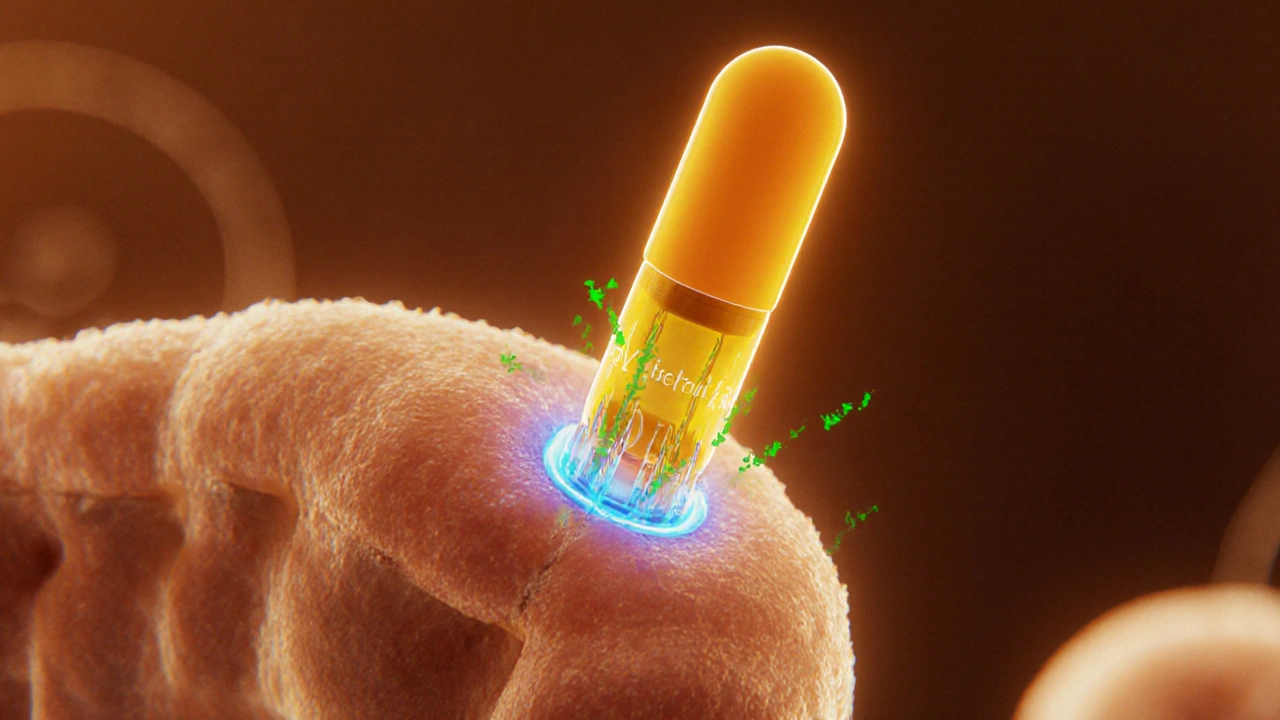Secondary Hyperparathyroidism
When dealing with secondary hyperparathyroidism, a disorder where the parathyroid glands overproduce hormone because another illness is driving the imbalance. Also known as secondary hyperPTH, it usually pops up after kidney problems or vitamin D shortage push calcium low and phosphorus high.
One of the biggest triggers is chronic kidney disease, a long‑term loss of kidney function that messes up phosphate removal and vitamin D activation. When the kidneys can’t clear phosphate, blood phosphate climbs, which pulls calcium down. The drop in calcium signals the parathyroid glands to secrete more parathyroid hormone, the chemical that raises blood calcium by acting on bones, kidneys, and intestines. This chain reaction is the core of secondary hyperparathyroidism.
How Calcium Metabolism Gets Disrupted
Calcium metabolism, the body’s system for keeping blood calcium within a narrow range, depends on a tight dance between PTH, vitamin D, and the kidneys. In secondary hyperparathyroidism, the dance goes off‑beat: high phosphate, low active vitamin D, and stubbornly low calcium push PTH levels up. The result is bone turnover, vascular calcification, and itching that many patients describe as a constant low‑grade burn.
Vitamin D status matters a lot. Vitamin D deficiency, not enough 25‑hydroxy‑vitamin D to become the active form 1,25‑dihydroxy‑vitamin D, removes a key brake on PTH release. Without enough active vitamin D, the intestines absorb less calcium, the parathyroids sense an even bigger deficit, and they crank up hormone output. This feedback loop explains why supplementing vitamin D often drops PTH and calms the symptoms.
Understanding these relationships helps clinicians decide which lab values to watch. Typical labs show high phosphate, low calcium, elevated PTH, and low 25‑OH vitamin D. Imaging might reveal bone changes called osteitis fibrosa cystica, but most patients are diagnosed by blood work alone.
Treatment targets the root causes. Controlling phosphate intake, using phosphate binders, and correcting vitamin D deficiency are first‑line steps. When those aren’t enough, calcimimetics like cinacalcet can trick the parathyroid receptors into thinking calcium is higher than it actually is, lowering PTH secretion. In severe cases, surgeons may remove part of the parathyroid glands, but that’s a last resort.
Diet also plays a role. Cutting down on processed foods high in phosphate additives, choosing fresh fruits and vegetables, and ensuring moderate calcium intake can keep the calcium‑phosphate balance steadier. Patients on dialysis need special attention because the treatment itself can shift mineral levels quickly.
Dialysis modalities matter, too. Peritoneal dialysis often leads to lower phosphate spikes compared with hemodialysis, which can lessen the stimulus for PTH overproduction. Some centers use low‑calcium dialysate to avoid extra calcium load, but they balance that against the risk of hypocalcemia.
Monitoring is an ongoing job. Guidelines suggest checking PTH, calcium, and phosphate every month for patients with advanced kidney disease. When the numbers trend upward, doctors tweak phosphate binders, adjust vitamin D doses, or consider adding a calcimimetic.
Patient education is crucial. People often think “high calcium” is always good, but in secondary hyperparathyroidism the goal is to keep calcium within the normal range while lowering phosphate and PTH. Explaining why certain foods are restricted and why supplements are prescribed helps adherence.
Research continues to refine targets. Some studies show that keeping PTH under 300 pg/mL reduces cardiovascular events, while others focus on bone density preservation. The exact cut‑offs vary by lab and patient, but the principle remains: lower the overactive hormone, protect the skeleton and heart.
In summary, secondary hyperparathyroidism is a chain reaction that starts with kidney‑related phosphate retention or vitamin D shortage, spikes PTH, and then disrupts calcium metabolism. Managing it means attacking the phosphate load, fixing vitamin D, and sometimes using medications that directly calm the parathyroids.
Below you’ll find articles that break down each piece of the puzzle—how to buy affordable medications, compare treatment options, and understand the science behind the labs. Dive into the resources to get practical tips you can apply right away.
